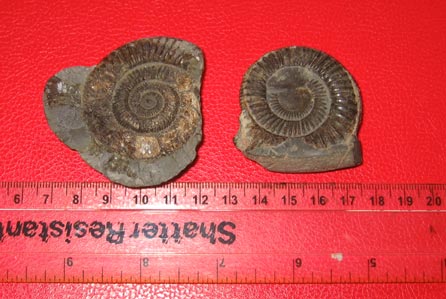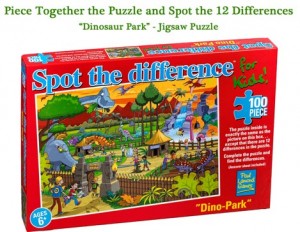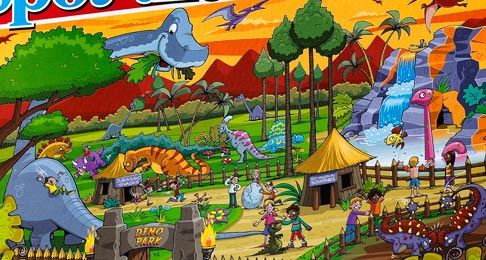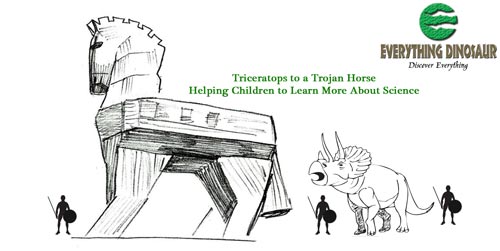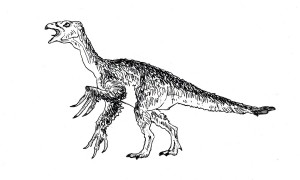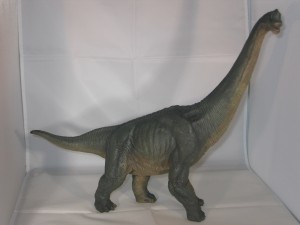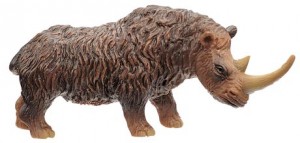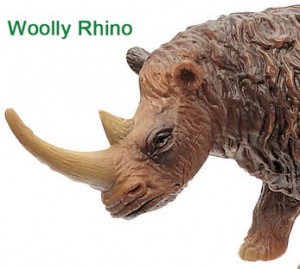Grandfather finds Plesiosaur Fossils
Palaeontologists in the Grande Prairie region of Alberta (Canada), have something new to study after a retired farmer and his grandson discovered the fossilised remains of a Cretaceous plesiosaur whilst walking along the Smoky River. For many palaeontologists, including Dr Philip Bell who was asked to examine the fossils, this summer has been a particularly stressful one after a number of vertebrate fossil sites were attacked by vandals and looted.
Cretaceous Plesiosaur
For Dr Bell the prospect of studying a potential new species of marine reptile may go some way to compensate him and his colleagues over the loss of hadrosaur material after the spate attacks on fossil dig sites.
To read more about the vandalism: Vandals in Alberta damage Duck-Billed Dinosaur Skeleton.
Norm Dyck and his young grandson were just walking along the banks of the Smoky River when they stumbled upon the large matrix of fossilised bones that had eroded out of one of the banks. Knowing that they had found fossil bone, but not knowing quite what animal it might be, they took their discovery along to Dr Bell.
For Dr Bell, a project palaeontologist at the nearby Pipestone Creek Dinosaur Initiative, a preliminary examination proved that this was not dinosaur material, he stated:
“I realised that these were not dinosaur bones, they were something different”
The fossils have been identified as articulated vertebrae (back bones) from a long-necked pliosaur (plesiosaur). Plesiosaurs were a group of marine reptiles, distantly related to the Dinosauria. These animals evolved in the Mesozoic and lived right up until the end of the Cretaceous. Many were long-necked, fish-eaters and some specimens grew up to more than 12 metres in length.
An Illustration of a Typical Plesiosaur
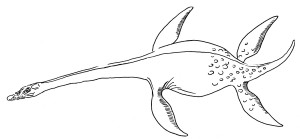
Agile Mesozoic marine reptiles.
Picture credit: Everything Dinosaur
The vertebrae and other fragments of fossil bone found by Mr Dyck suggest that this individual may have been about three metres long. It is not known at this time whether the fossils represent a new species.
A New Species?
The Grande Prairie region may be better known for its Late Cretaceous dinosaur fossils, but towards the end of the Cretaceous the Western Interior Seaway (an inland sea that covered much of Canada, the United States and ran down to the Gulf of Mexico), waxed and waned and the Grande Prairie area found itself part of this shallow, tropical sea.
Other plesiosaur fossils have been found in the Canadian Province of Alberta. For example, plesiosaur fossils occur throughout the Dinosaur Park Formation across the Dinosaur Provincial Park, but they are rare and generally poorly preserved. Other plesiosaur fossils have been found in the south of the Province, discovered in oilsands.
To read about a recent Canadian plesiosaur fossil discovery: Plesiosaur rises to the Surface.
As Dr Bell freely admits, some of the strata along the Smoky River has yet to be fully mapped and explored by his team. This discovery “bodes very well for the future”, according to Dr Bell. It is likely more marine reptile fossils are out there awaiting discovery. Dr Bell and his colleagues hope to be able to explore the area where the grandfather and grandson team made their fossil find.
The fossil has been donated to collection being prepared for the Philip J. Currie Dinosaur Museum which is under construction at the nearby town of Wembley.
For Philip Bell and his colleagues after the trouble they have had from vandalism, the discovery is a welcome silver lining to a trying summer when several sites were looted and wrecked. Norm Dyck’s action in donating the fossil shows the supportive side to the community.
Dr Bell added:
“It’s really heartening to see people are genuinely interested and supportive of this work. They want to see this museum [Philip J. Currie Dinosaur Museum] built, they want to see these treasures protected for future generations.”
Let’s hope that the Smoky River plesiosaur proves a welcome tonic for the palaeontologists and field workers of Grande Prairie.
For models and figures of plesiosaurs and other marine reptiles: Papo Marine Reptile Models and Figures.


